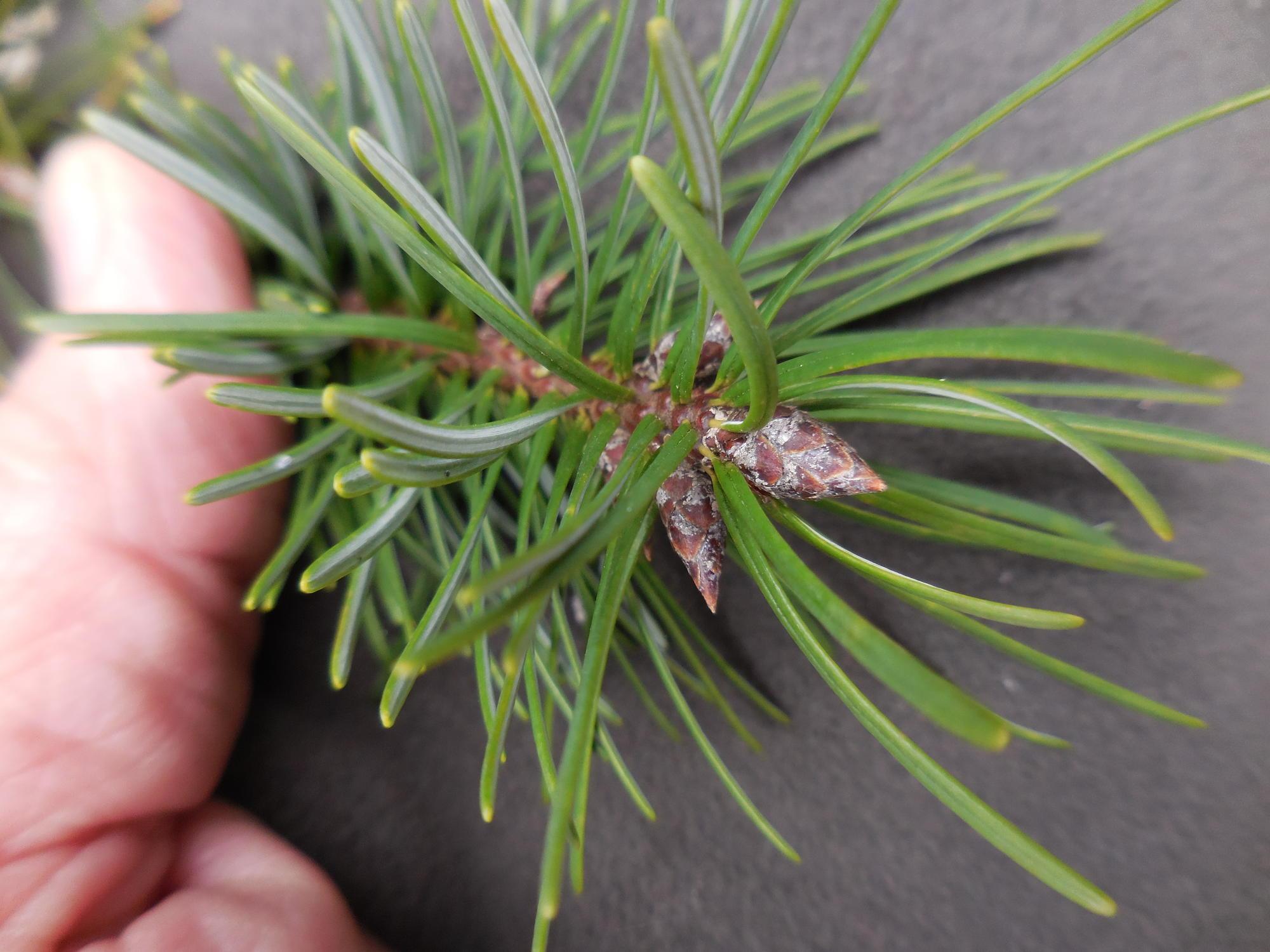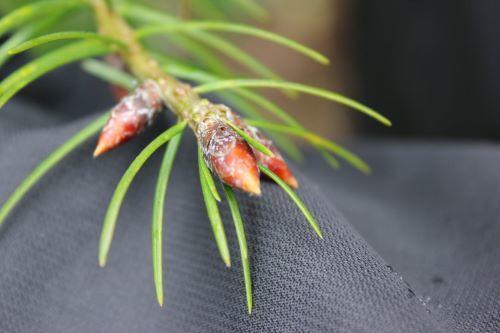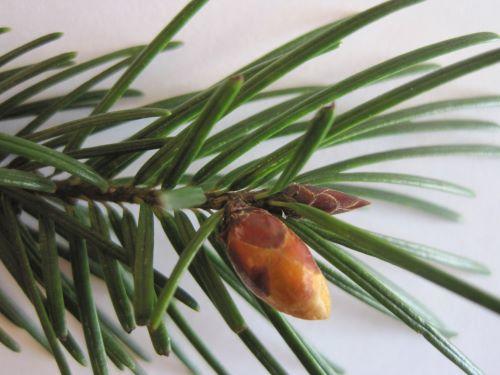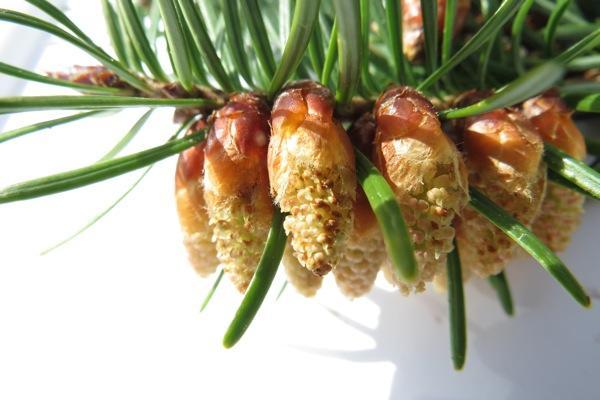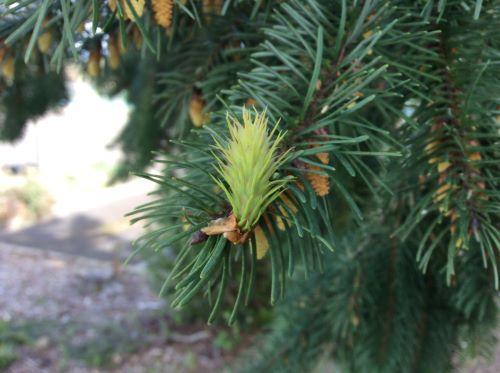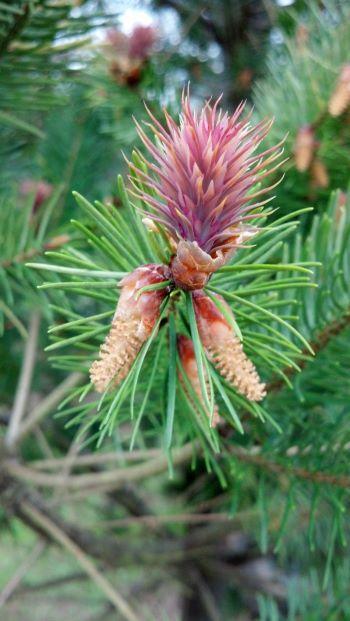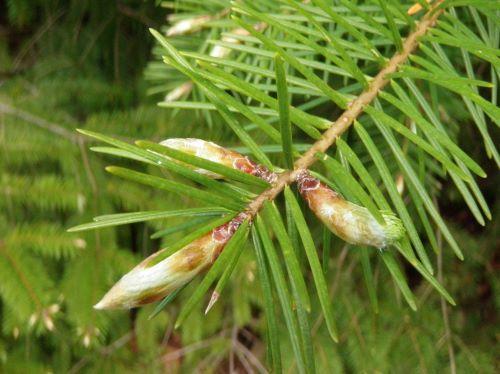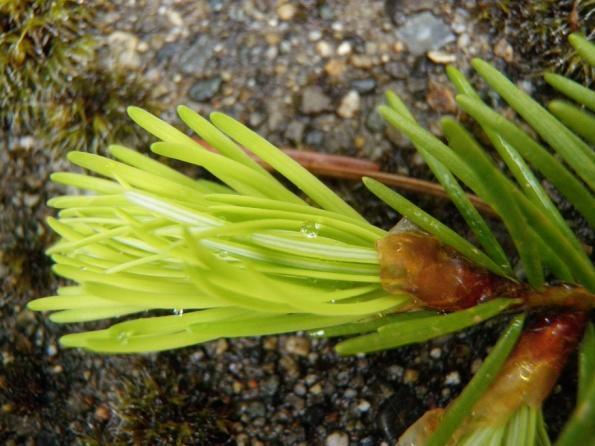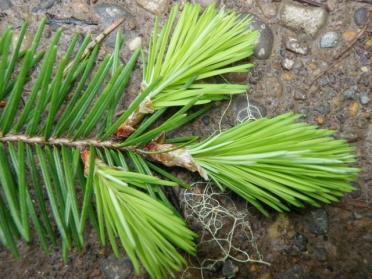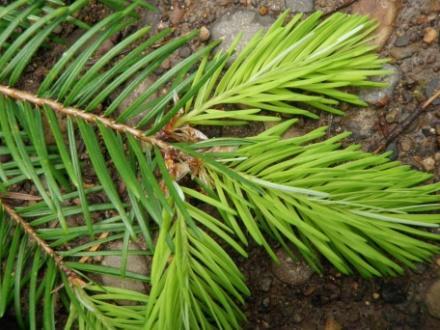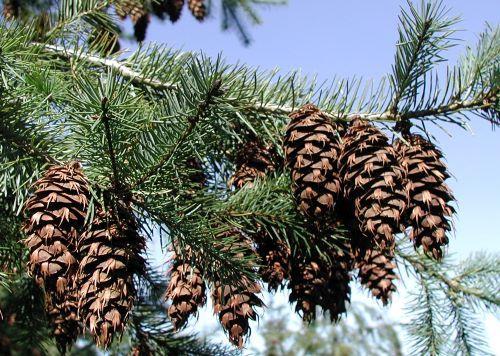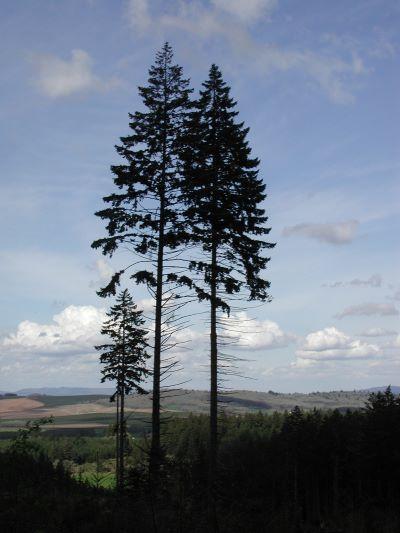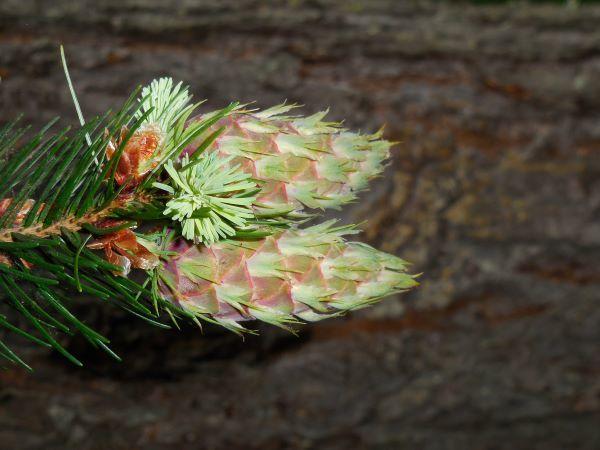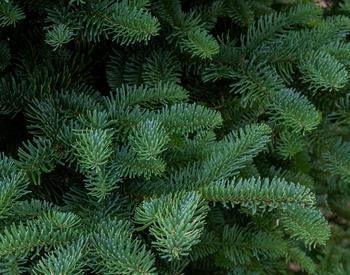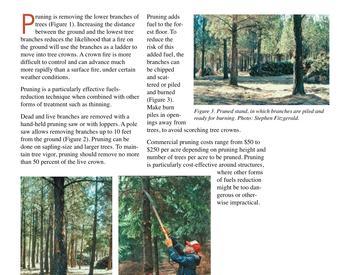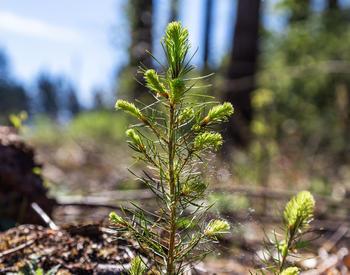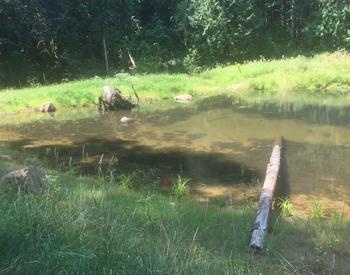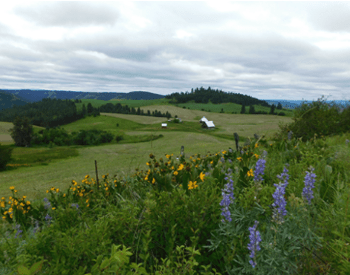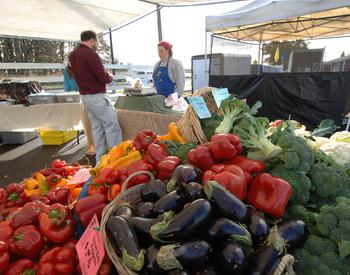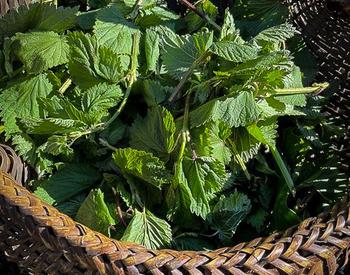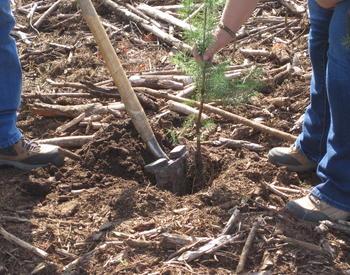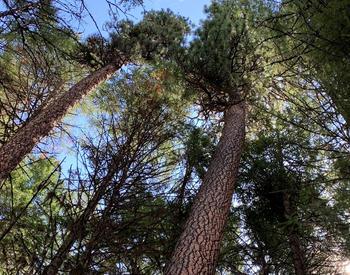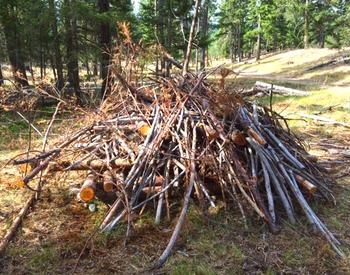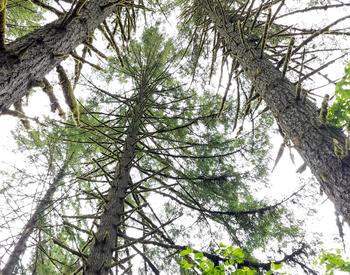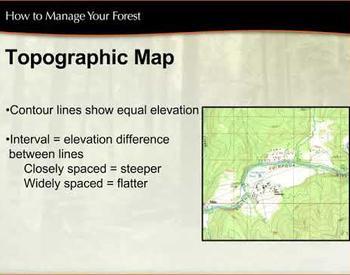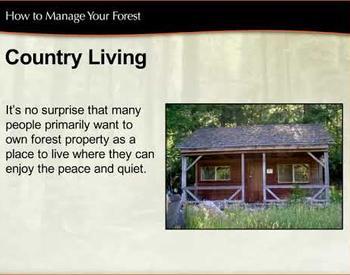Use the arrows to the right and left of the photo to navigate through the photos. Then the back arrow to return to the Educational Gallery home page.
Douglas-fir, Pseudotsuga menziesii
Breaking needle buds
One or more breaking needle buds are visible on the plant. A needle bud is considered "breaking" once a green needle tip is visible at the end of the bud, but before the first needle from the bud has unfolded and spread away at an angle from the developing stem.
Young needles
One or more young, unfolded needles are visible on the plant. A needle is considered "young" and "unfolded" once it has spread away from the developing stem enough that its point of attachment to the stem is visible, but before it has reached full size or turned the darker green color or tougher texture of mature needles on the plant.
Pollen cones
One or more fresh, male pollen cones (strobili) are visible on the plant. Cones have overlapping scales that are initially tightly closed, then spread apart to open the cone and release pollen. Include cones that are unopened or open, but do not include wilted or dried cones that have already released all of their pollen.
Open pollen cones
One or more open, fresh, male pollen cones (strobili) are visible on the plant. Cones are considered "open" when the scales have spread apart to release pollen. Do not include wilted or dried cones that have already released all of their pollen.
Pollen release
One or more male cones (strobili) on the plant release visible pollen grains when gently shaken or blown into your palm or onto a dark surface.
Unripe seed cones
One or more unripe, female seed cones are visible on the plant. For Pseudotsuga menziesii, an unripe seed cone is green or brown with scales closed together.
Ripe seed cones
One or more ripe, female seed cones are visible on the plant. For Pseudotsuga menziesii, a seed cone is considered ripe when it has turned brown and the scales have begun to spread apart to expose the seeds inside. Do not include empty cones that have already dropped all of their seeds.
Recent cone or seed drop
One or more seed cones or seeds have dropped or been removed from the plant since your last visit. Do not include empty seed cones that had long ago dropped all of their seeds but remained on the plant.

